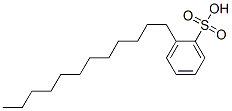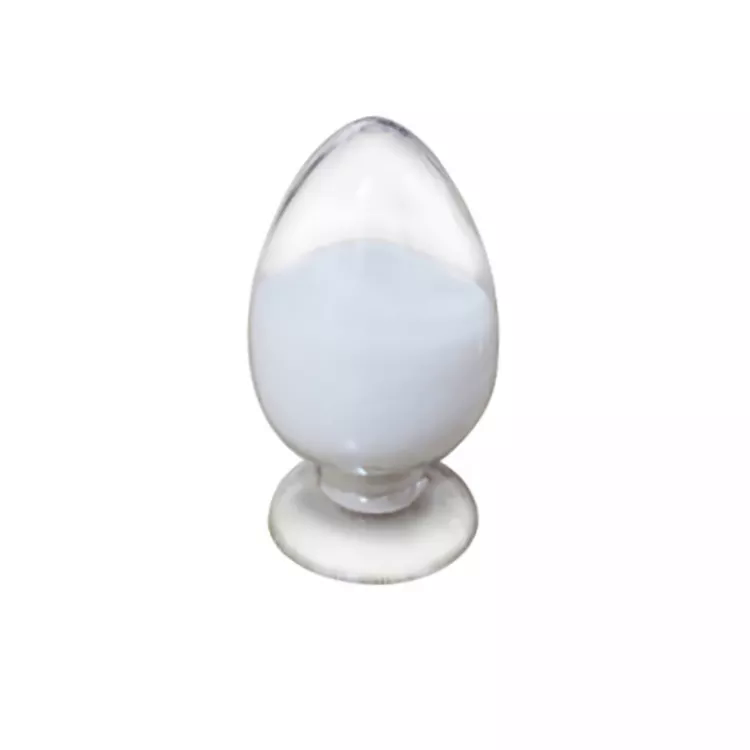Undecanedioic acid
Synonym(s):1,9-Nonanedicarboxylic acid
- CAS NO.:1852-04-6
- Empirical Formula: C11H20O4
- Molecular Weight: 216.27
- MDL number: MFCD00004444
- EINECS: 217-440-6
- SAFETY DATA SHEET (SDS)
- Update Date: 2025-01-27 09:38:02

What is Undecanedioic acid?
Chemical properties
white to light yellow powder
The Uses of Undecanedioic acid
Undecanedioic Acid is a bioactive compound found in Polygala tenuifolia root which is used as a functional food due to its attractive health benefits.
Definition
ChEBI: An alpha,omega-dicarboxylic acid that is nonane with two carboxylic acid groups at positions C-1 and C-9.
Flammability and Explosibility
Non flammable
Synthesis
Undecanedioic acid is obtained by reacting α -nitro ketone and NaOH in MeOH.To a solution of α -nitro ketone (0.7 mmol) in MeOH (4.2 ml), 25 ml of 0.5 M Na2HPO4 in a 1 N of NaOH were added and the resulting mixture was heated at 70 °C for 1-4 h, then Oxone (1.75 mmol) in water (3 ml) was added to the cold solution (r. t.). After 4 h the mixture was diluted with brine (10 ml), acidified to pH=2 with a 10% solution of HCl and extracted with EtOAc (3 x 20 ml). The combined organic layers were washed with brine (10 ml), dried over Na2SO4 and evaporated to yield pure dicarboxylic acid.
Fig The synthetic method 2 of Undecanedioic acid.
Source
Undecanedioic acid is a natural product found in Aloe africana, Phaseolus vulgaris, and other organisms with data available.
Properties of Undecanedioic acid
| Melting point: | 108-110 °C (lit.) |
| Boiling point: | 389.33°C (rough estimate) |
| Density | 1.1629 (rough estimate) |
| vapor pressure | 10Pa at 20℃ |
| refractive index | 1.4421 (estimate) |
| storage temp. | Sealed in dry,Room Temperature |
| solubility | methanol: 10 mg/mL, clear |
| form | Solid |
| pka | 4.48±0.10(Predicted) |
| color | White to Off-White |
| Water Solubility | 5.10g/L(21 ºC) |
| BRN | 1780537 |
| CAS DataBase Reference | 1852-04-6(CAS DataBase Reference) |
| NIST Chemistry Reference | Undecanedioic acid(1852-04-6) |
| EPA Substance Registry System | Undecanedioic acid (1852-04-6) |
Safety information for Undecanedioic acid
| Signal word | Warning |
| Pictogram(s) |
 Exclamation Mark Irritant GHS07 |
| GHS Hazard Statements |
H319:Serious eye damage/eye irritation |
| Precautionary Statement Codes |
P305+P351+P338:IF IN EYES: Rinse cautiously with water for several minutes. Remove contact lenses, if present and easy to do. Continuerinsing. |
Computed Descriptors for Undecanedioic acid
| InChIKey | LWBHHRRTOZQPDM-UHFFFAOYSA-N |
New Products
3-Iodophenylacetic acid 3-Pyridineacetonitrile, α-hydroxy- 2-Propanamine, 1-chloro-, hydrochloride (9CI) 3-(hexyloxy)-4-(pyridin-3-yl)-1,2,5-thiadiazole 2-Hexyn-1-ol Dibenzo-18-crown-6 Nickel(II) perchlorate hexahydrate, 98% 4-Bromophenylacetonitrile, 95% 3-Bromo-4-fluoroaniline, 97% Sodium tetraborate decahydrate, 98% Palladium(II) acetate, trimer, Pd 99% 4-Bromo-2-chlorotoluene, 97% N N Dimethylformamide Dimethyl Acetal (Dmf Dma) 2,3-Dichloro Benzoyl Cyanide [Side Chain] Bis(2-Chloroethyl) Amine Hydrochloride L-Glutamic Acid Diethyl Ester Hydrochloride 5-(Difluoromethoxy)-2-Mercaptobenzimidazole 1-Ethyl-3-(3-Dimethylaminopropyl)-Carbodiimide Hydrochloride [EDC Hcl] 1,4-Napthoquinone Bromoiodomethane Sodium Bicarbonate Methylene Dichloride (MDC) Ethyl Acetate Indole-3-Carbinol (I3C)Related products of tetrahydrofuran








You may like
-
 1852-04-6 Undecanedioic Acid 98%View Details
1852-04-6 Undecanedioic Acid 98%View Details
1852-04-6 -
 Undecanedioic acid 98% CAS 1852-04-6View Details
Undecanedioic acid 98% CAS 1852-04-6View Details
1852-04-6 -
 Undecanedioic acid 98% (HPLC) CAS 1852-04-6View Details
Undecanedioic acid 98% (HPLC) CAS 1852-04-6View Details
1852-04-6 -
 1,9-Nonanedicarboxylic Acid CAS 1852-04-6View Details
1,9-Nonanedicarboxylic Acid CAS 1852-04-6View Details
1852-04-6 -
 Undecanedioic acid CAS 1852-04-6View Details
Undecanedioic acid CAS 1852-04-6View Details
1852-04-6 -
 Cyclohexane, (2-propynyloxy)- 67967-07-1 98+View Details
Cyclohexane, (2-propynyloxy)- 67967-07-1 98+View Details
67967-07-1 -
 3-Iodophenylacetic acid 1878-69-9 98+View Details
3-Iodophenylacetic acid 1878-69-9 98+View Details
1878-69-9 -
 132945-75-6 (S)-1-Boc-3-methanesulfonyloxy-pyrrolidine 98+View Details
132945-75-6 (S)-1-Boc-3-methanesulfonyloxy-pyrrolidine 98+View Details
132945-75-6
